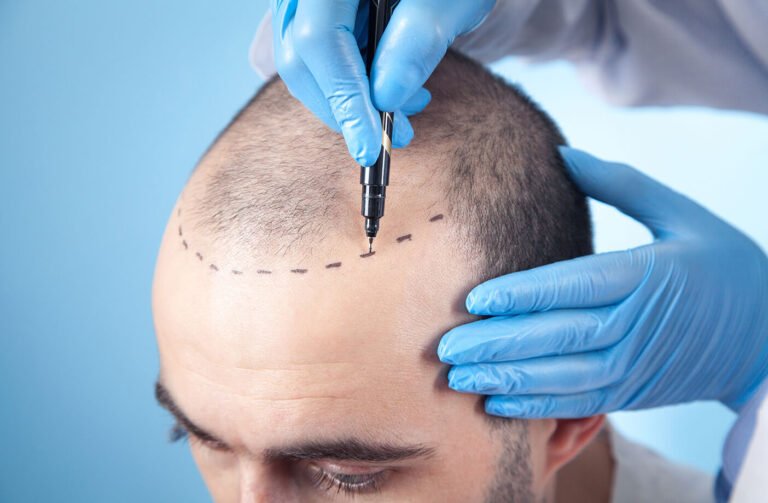Have you noticed your hair thinning or receding lately? You’re not alone. Many individuals face hair loss, significantly impacting self-esteem and social interactions. Fortunately, hair transplantation offers a promising solution. This article will explore the various types of hair grafts used in these procedures, helping you understand your options.
A hair graft is a small scalp skin containing several hair follicles. These grafts are extracted from your ‘donor site’ (usually the back of your head) and implanted into balding areas, where they grow naturally. This technique is at the heart of modern hair transplant procedures.
Types of Hair Grafts
Hair transplantation revolves primarily around the use of three different types of grafts. Each type has unique attributes and techniques, catering to diverse needs and outcomes.
Follicular Unit Extraction (FUE) Grafts
FUE is a highly advanced method that involves extracting individual hair follicles directly from the scalp using a small punch tool. This technique is favored for minimizing scarring, leaving only tiny, dot-like scars that are hardly noticeable. FUE is particularly suitable for patients who prefer to keep their hair short or those who wish to avoid the linear scar associated with FUT.
Follicular Unit Transplantation (FUT) Grafts
FUT requires removing a strip of skin from the donor area, typically from the back of the head, which is then meticulously dissected into individual follicular units under a microscope. This method efficiently obtains many grafts in a single session, making it ideal for patients requiring significant coverage. The main drawback is the linear scar it leaves, which can be concealed under longer hair.
Direct Hair Implantation (DHI) Grafts
DHI uses a specialized tool to extract and implant hair follicles simultaneously. This method offers enhanced control over each implanted hair’s angle, depth, and direction, resulting in a very natural appearance. DHI typically involves:
- More precise placement.
- Making it a good option for enhancing hairlines or adding density to specific areas with minimal graft handling.
- Potentially increasing their viability.
Factors Influencing the Choice of Graft
Several factors can influence the decision on which type of graft to use for a hair transplant. These considerations are crucial in customizing the treatment to individual needs, ensuring effectiveness and satisfaction.
Hair Type and Texture
Different hair types and textures may respond better to certain transplant methods. For example, curly or coarse hair might require more space between grafts, which can be better managed through FUT or DHI methods.
Extent of Hair Loss
The degree and pattern of hair loss significantly affect the choice of graft. FUT is often preferred for extensive hair loss as it allows for harvesting a large number of grafts in one session. In contrast, FUE might be better for localized or less extensive balding.
Patient’s Lifestyle and Recovery Preferences
The patient’s daily activities and recovery capacity play a crucial role. Active people who wish to return to routine quickly may prefer FUE or DHI due to their less invasive nature and quicker healing time.
Cosmetic Goals
The patient’s aesthetic goals also dictate the choice of technique. Due to its precision, DHI might be the best option for a more natural-looking hairline. Conversely, FUT could be better suited for adding volume over large bald areas.
Cost Factors for Different Types of Grafts
The Turkey hair transplant cost varies based on the type of graft and several other factors. Understanding these can help you manage expectations and plan financially.
Technique-Specific Costs
- FUE: Generally more expensive due to the labor-intensive nature of extracting individual follicles.
- FUT: Often less costly than FUE as it involves less time and labor to harvest many grafts.
- DHI: Typically the most expensive due to the use of specialized tools and the detailed nature of the procedure.
Number of Grafts Needed
The total cost is also influenced by the number of grafts required to achieve the desired density and coverage, which can vary significantly from one patient to another.
Geographic Location
The clinic’s location can affect pricing, with clinics in metropolitan areas or countries with higher living costs generally charging more.
Experience of the Surgeon
Highly skilled and renowned surgeons may charge a premium for their services, reflecting their expertise and the demand for their work.
Understanding these expanded aspects of hair graft types, factors influencing graft choice, and cost considerations can provide comprehensive insight into hair transplantation, helping you make an informed decision that aligns with your hair restoration goals.
Choosing to undergo a hair transplant is a significant decision influenced by various factors, including the type of hair grafts available. We hope this guide has provided a clear understanding of your options. Remember, consulting with a hair restoration specialist is crucial in making an informed decision tailored to your needs.


